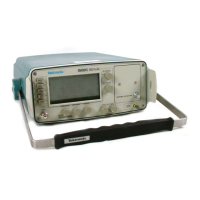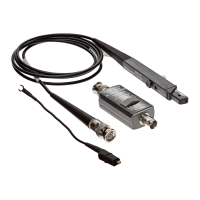Maintenance
7–2
1502C MTDR Service Manual
The interior of the 1503C is protected from dirt and dust as long as the option port
and case are intact. However, if interior cleaning is necessary, blow off accumulated
dust with low-pressure air and remove the remaining dirt with a soft brush, cotton
swab, or pipe cleaner moistened with isopropyl alcohol.
All the switches and potentiometers on the 1503C are sealed from external
contaminants and, therefore, require little maintenance and no lubrication.
Occasionally, blowing out accumulated dust is all that is needed.
Obvious defects, such as broken connections, damaged boards, frayed cables,
improperly seated components, and heat-damaged components should be corrected
first before attempting further troubleshooting. Heat damage usually indicates a
deeper problem somewhere in the circuitry and should be traced and corrected
immediately.
We do not recommend electrical checks of individual components because defective
components will become evident during instrument operation.
After maintenance has been performed, the instrument should be checked as per the
procedures in the Calibration chapter of this manual.
Part Removal and Replacement
The fuse is accessible through the rear panel of the case.
1. Unscrew the fuse cover and remove.
REMOVE REMOVE
CAP TO CAP TO
SELECT REPLACE
VOLTAGE FUSE
Figure 7–1: Location of Voltage Selector and Fuse Holder on Rear Panel
Lubrication
Visual Inspection
Recalibration
AC Fuse
Artisan Technology Group - Quality Instrumentation ... Guaranteed | (888) 88-SOURCE | www.artisantg.com

